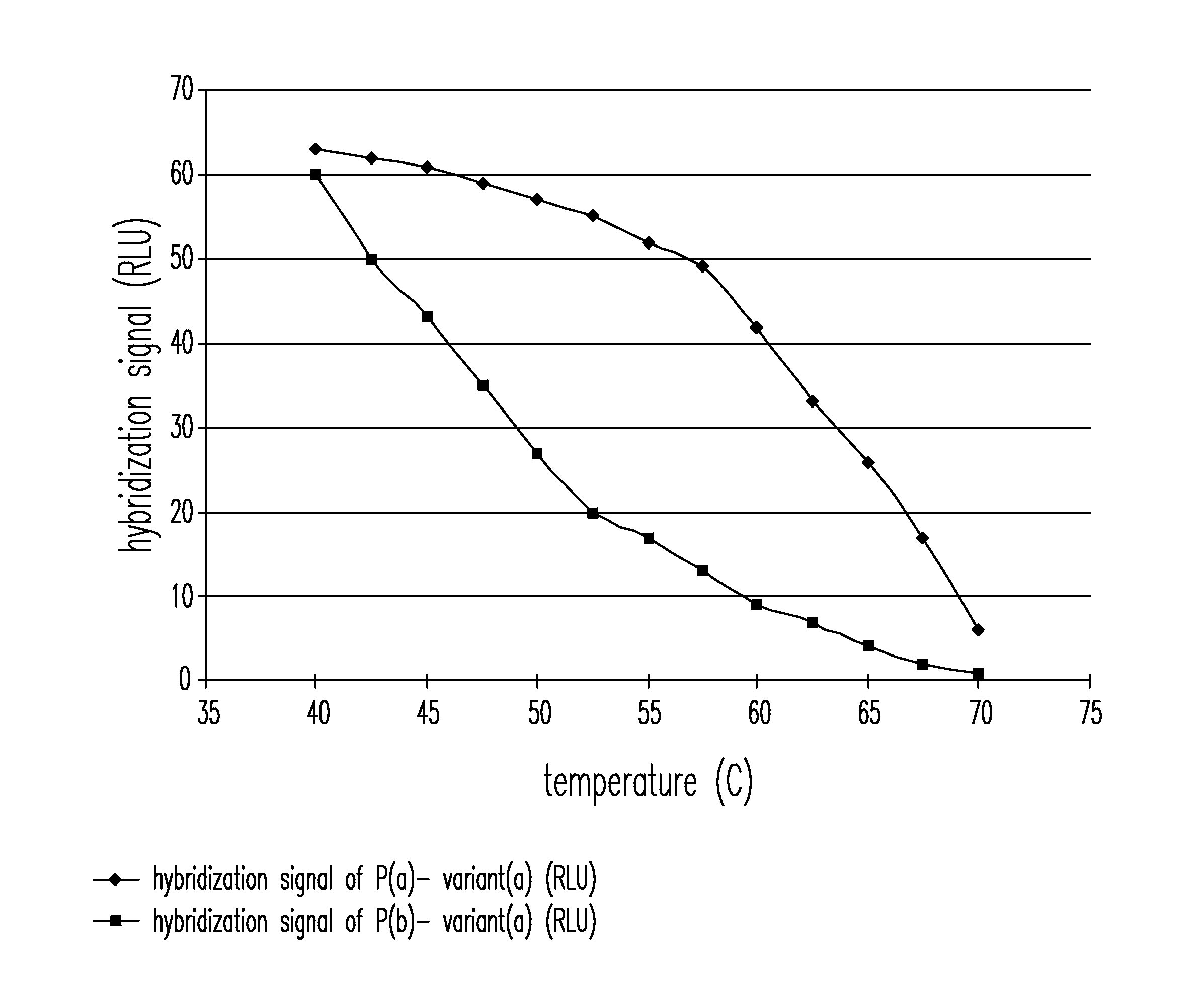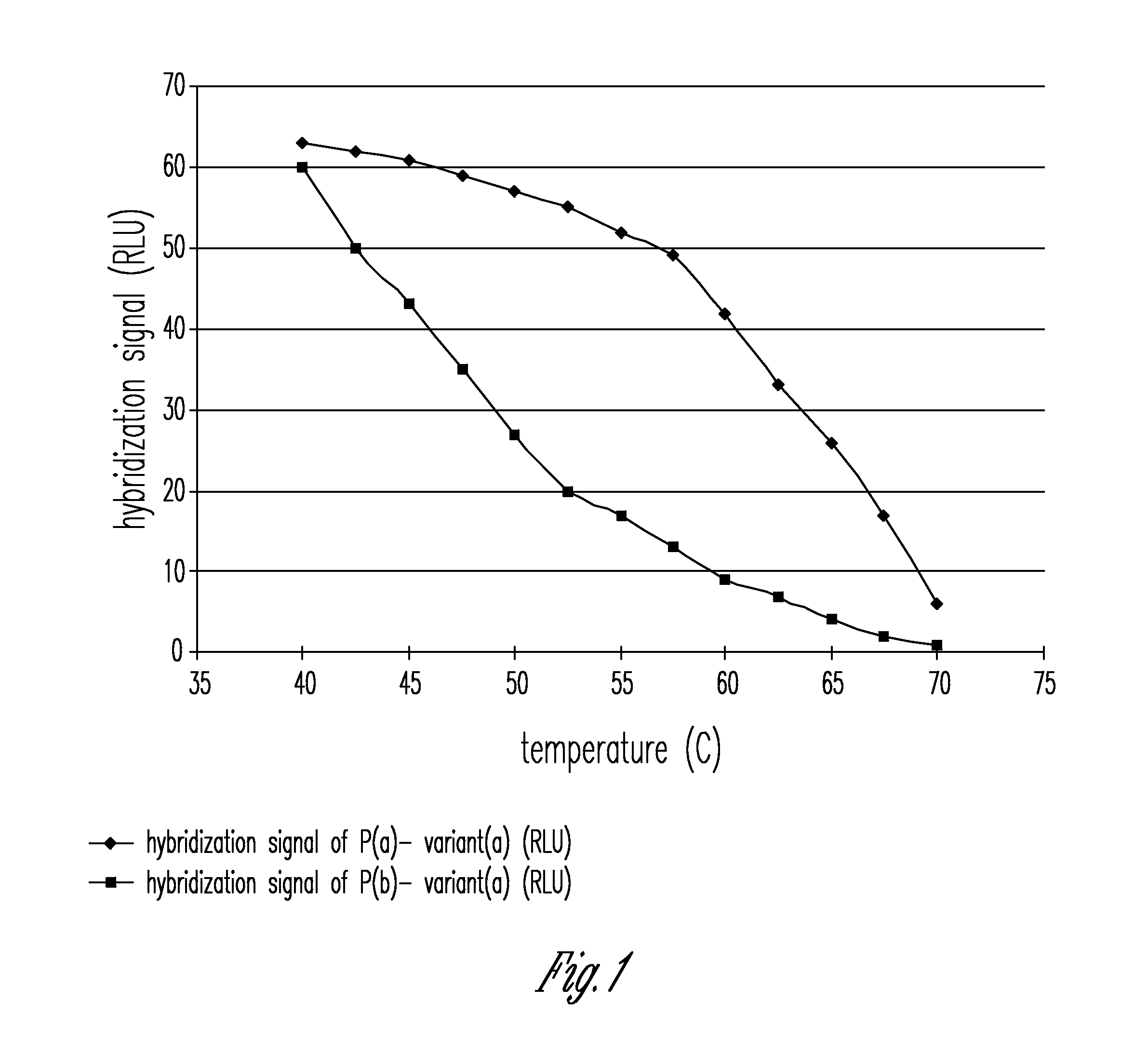Method for single nucleotide polymorphism and mutation detection using real time polymerase chain reaction microarray
a technology of polymerase chain reaction and polymorphism, which is applied in the field of single nucleotide polymorphism and mutation detection using real time polymerase chain reaction microarray, can solve the problems of inability to adapt to the platform of automated high-throughput assays or to multiplex screening
- Summary
- Abstract
- Description
- Claims
- Application Information
AI Technical Summary
Benefits of technology
Problems solved by technology
Method used
Image
Examples
Embodiment Construction
[0007]The present invention provides a method and an apparatus for determining the highly sensitive multiplex single nucleotide polymorphism and mutation detection using a real time polymerase chain reaction microarray. This method has many advantages including, for example, ease of operation in which all of the steps are integrated on one chip, multiplex single nucleotide polymorphism (SNP) detection in one chip, rapid analysis in less than 3 hours after extracting the DNA, high sensitivity due to amplification and fluorescence detection, labor saving due to automation, a more accurate hybridization signal is obtained when the measurement is performed over a wide temperature range, and poses very little biosafety hazard because all of reactions are carried out on one disposable chip.
[0008]Unless otherwise indicated, the words and phrases presented in this document have their ordinary meanings to one of skill in the art. Such ordinary meanings can be obtained by reference to their u...
PUM
 Login to View More
Login to View More Abstract
Description
Claims
Application Information
 Login to View More
Login to View More - R&D
- Intellectual Property
- Life Sciences
- Materials
- Tech Scout
- Unparalleled Data Quality
- Higher Quality Content
- 60% Fewer Hallucinations
Browse by: Latest US Patents, China's latest patents, Technical Efficacy Thesaurus, Application Domain, Technology Topic, Popular Technical Reports.
© 2025 PatSnap. All rights reserved.Legal|Privacy policy|Modern Slavery Act Transparency Statement|Sitemap|About US| Contact US: help@patsnap.com



